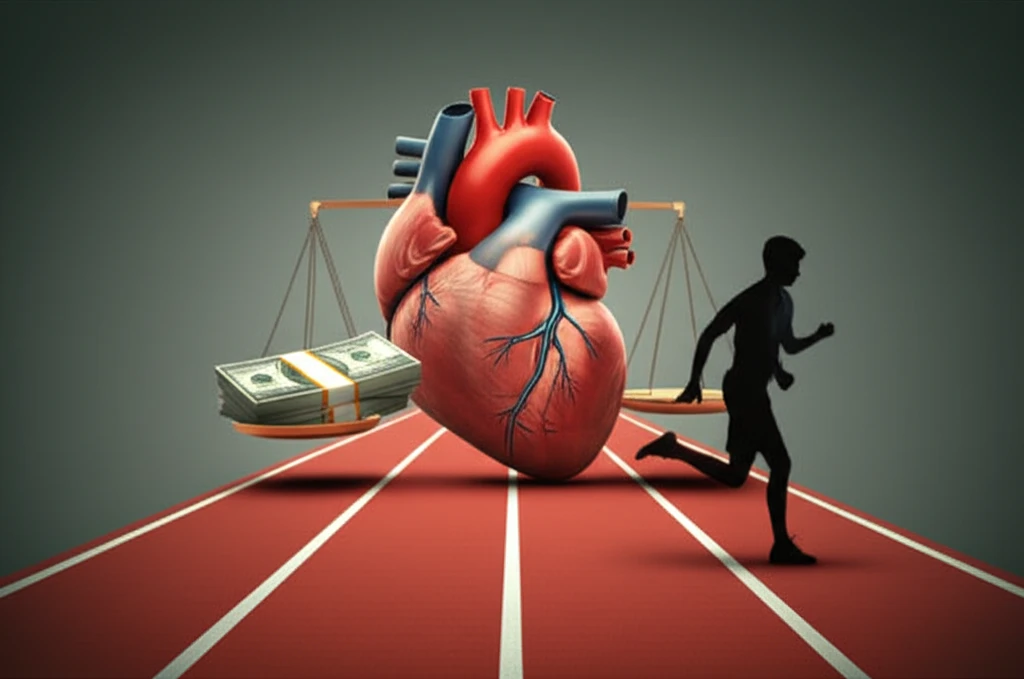
How Much is Too Much? Balancing the Cost of Preventing Sudden Cardiac Death in Young Athletes
"Is intensive cardiac screening for young athletes worth the financial investment? A look at the costs, benefits, and ethical considerations of preventative measures."
The sudden and unexpected death of a young athlete is a devastating event that resonates deeply within communities. While these occurrences are statistically rare, the emotional impact is profound, leading to a push for preventative measures. This has spurred debates and differing recommendations regarding the use of medical technology to screen athletes for potential cardiac risks.
The causes of sudden cardiac death (SCD) in athletes can generally be divided into two categories: coronary heart disease in older athletes (over 35) and congenital heart disease (structural heart defects) in younger athletes. Identifying these underlying conditions through screening can potentially prevent tragedies by disqualifying at-risk individuals from dangerous activities.
However, intensive screening programs come with their own set of challenges. Noninvasive testing is essential to detect the lowest possible number of potentially fatal anomalies. This raises important questions about the cost-effectiveness and overall tolerability of such measures. With the vast majority of tests returning negative results, how do we balance the desire to protect young athletes with the financial realities of widespread screening?
The Financial and Ethical Dilemma of Cardiac Screening: Is the Investment Justified?

A key consideration in implementing preventative cardiac screening programs is the balance between cost and tolerability. Resources allocated to these initiatives need to be carefully weighed against the potential benefits, especially when considering the low incidence of detectable anomalies. The fact that over 95% of tests are likely to be negative raises concerns about the efficient use of healthcare resources.
- Cost-Effectiveness: Balancing the expense of screening with the rarity of detectable conditions.
- Accuracy: Ensuring tests are reliable to avoid false positives and unnecessary disqualifications.
- Ethical Considerations: Weighing the benefits of prevention against the potential harm of false positives.
- Resource Allocation: Deciding how to best allocate resources to maximize the impact of preventative measures.
Investing in the Future: Finding the Right Balance
Despite the high costs, consider that similar resources are often allocated to prevent one death per year through statin therapy in atherosclerotic populations at intermediate risk. Investing in the cardiac health of young athletes is an investment in the future, potentially saving lives and ensuring the well-being of young, healthy members of society. The challenge lies in finding a balanced approach that maximizes the benefits of screening while minimizing the financial and emotional costs.
